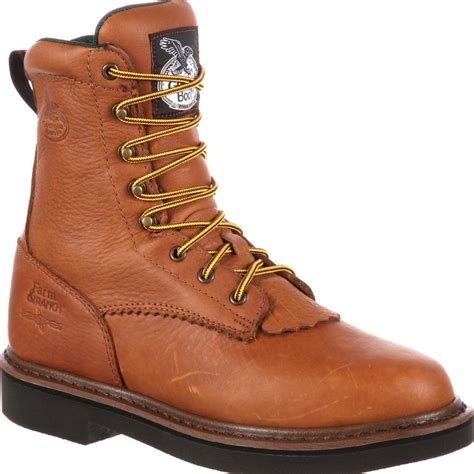5 Tips Leather Workboots

Leather workboots are a staple in many industries, providing protection, comfort, and durability for workers who spend long hours on their feet. However, to get the most out of your leather workboots, it’s essential to choose the right pair, break them in properly, and maintain them regularly. Here are five tips to help you make the most of your leather workboots:
1. Choose the Right Leather Type
When selecting leather workboots, the type of leather is crucial. Full-grain leather, for instance, is known for its durability and water resistance, making it an excellent choice for demanding work environments. On the other hand, suede or nubuck leather may not be the best option for workplaces where boots are exposed to heavy wear and tear or harsh chemicals. Understanding the different types of leather and their characteristics can help you make an informed decision that suits your specific needs.
2. Break Them In Properly
Breaking in a new pair of leather workboots can be a challenging process, but it’s vital for ensuring comfort and preventing blisters. One effective method is to wear them around the house for a few hours a day before taking them to the workplace. You can also use a leather conditioner to soften the leather and make the break-in period more comfortable. If your boots come with removable insoles, consider swapping them out with orthotic insoles designed for your foot type to enhance comfort and support.
3. Maintain Them Regularly
Regular maintenance is key to extending the life of your leather workboots. This includes cleaning them regularly, using a waterproofing spray to protect the leather against water and stains, and conditioning the leather to keep it soft and flexible. For boots with intricate stitching or decorative elements, avoiding harsh chemicals and opting for gentle cleaning products is advisable. Additionally, allowing your boots to air dry if they get wet, rather than speeding up the drying process with heat, can prevent the leather from cracking.
4. Consider the Safety Features
Safety should always be a top priority when choosing workboots. Look for boots that meet safety standards relevant to your workplace, such as slip-resistant soles, steel or composite toes for protection against heavy objects, and electrical hazard protection if you work with electrical components. The outsole material and tread pattern can also significantly affect the boot’s performance on different surfaces, so consider the types of environments you’ll be working in.
5. Invest in Quality
While it might be tempting to opt for cheaper options, investing in a high-quality pair of leather workboots can pay off in the long run. High-quality boots are not only more durable and less likely to need early replacement, but they also tend to offer better comfort and support, reducing the risk of foot fatigue and related injuries. Moreover, quality boots often come with better safety features and are made from materials that can withstand the rigors of a demanding work environment.
FAQ Section
How often should I condition my leather workboots?
+The frequency of conditioning your leather workboots depends on how often you use them and the conditions they're exposed to. As a general rule, applying a leather conditioner every 1-3 months can help maintain the health and appearance of the leather. However, if your boots are frequently exposed to water, dirt, or harsh chemicals, you may need to condition them more often.
Can I use any type of waterproofing spray on my leather workboots?
+No, not all waterproofing sprays are suitable for leather. Some waterproofing products can damage the leather or affect its breathability. Always choose a waterproofing spray that is specifically designed for leather and follow the manufacturer's instructions for application and testing on a small, inconspicuous area first.
How can I prevent my leather workboots from cracking?
+Preventing leather from cracking involves regular maintenance. Keeping the leather moisturized with a conditioner, avoiding extreme temperatures, and not exposing the boots to direct sunlight for extended periods can help. Additionally, ensuring the boots fit properly and aren't too tight, which can cause stretching and potential cracking, is also important.
By following these tips and maintaining your leather workboots with care, you can ensure they remain comfortable, protective, and durable throughout their lifespan, providing you with the support and safety you need in your workplace. Whether you’re working in construction, manufacturing, or any other industry that demands high-quality footwear, investing the time and effort into selecting and caring for your leather workboots can have a significant impact on your job performance and overall well-being.


